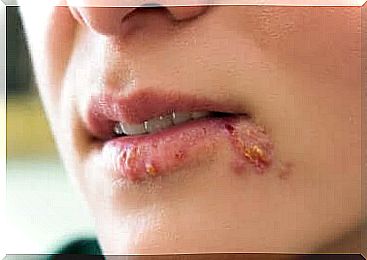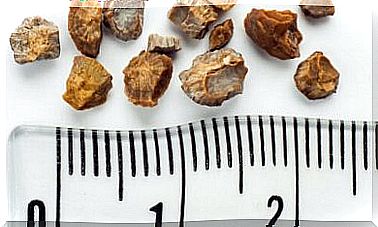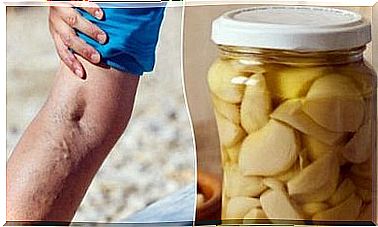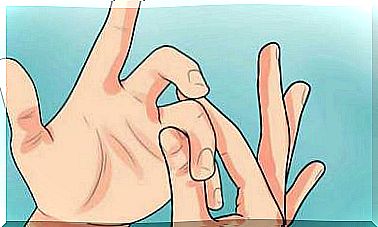Post-herpetic Neuralgia: Symptoms And Causes
Post-herpetic neuralgia is a consequence of infection with the herpes zoster virus. It is a very painful pathology. Here we will tell you about its origin and the options that exist for its treatment.

Post-herpetic neuralgia is the most common complication of herpes zoster. This relatively common viral infection in the general population does not always evolve with this consequence, but when it does, a big problem arises.
Usually a person gets the herpes zoster or chickenpox virus. This infection can go unnoticed, manifest itself with the symptoms of chickenpox – especially in children – or express itself with what is known as “shingles”.
Shingles is the first infection of herpes zoster in a body. Small lesions appear on the skin, such as blisters, which follow the path of the nerve where the virus is lodged. The most frequent locations are the ophthalmic nerve, the trigeminal nerve on the face and certain intercostal nerves in the thorax.
These blisters are accompanied by severe pain, such as a burn. After about a month, the skin lesions disappear and, gradually, the pain of this first infection goes away.
The basic problem is that the virus remains in the nerve, even if it does not manifest itself. After a while, some people experience very severe pain in the same area where the first infection occurred, but this time without skin lesions. It’s postherpetic neuralgia.
Older people are more likely to suffer from it, especially those over the age of sixty. Even if there is no cure, there are steps you can take to alleviate the symptoms.
Causes of postherpetic neuralgia
The origin of postherpetic neuralgia is clear: it is the herpes zoster virus. The main characteristic of this microorganism is that it lodges in the nerves of the human being for the whole life, even if it does not manifest itself through symptoms.
When the person with the virus gets older or their immune system weakens, it reactivates. Reactivation can be expressed as postherpetic neuralgia, which is severe pain in the affected nerve.
The pain is very intense and causes a burning sensation because the infected nerve is damaged. The virus destroys certain nerve fibers that transmit information. Because of the destroyed fibers, the nerve information becomes confused for the brain, which interprets it as pain.
Beyond the main cause of the disease, there are risk factors that make its onset more likely. It is :
- Age: beyond sixty years, its frequency increases.
- The characteristics of the initial infection: if the first appearance of herpes zoster was intense, there is a greater risk of posterior neuralgia.
- Chronic diseases: people with diabetes, for example, are at greater risk.
- Location: the face, and more particularly the ophthalmic area, are more painful.

Symptoms of the disease
The symptom of postherpetic neuralgia is pain. It appears in a specific place, which corresponds to the infected nerve. Normally, this is an area that a few months or years earlier was affected by the blisters from the first infection.
If left to progress, in most cases the pain would last six months. In some people, without treatment, this pain could even be endless. Some cases can also be considered disabling pain cases.
We could say that the three basic symptoms of the disease are:
- Pain: intense, burning, with a particular course and easily identifiable by the patient; it can last for months.
- Sensitivity: in the affected area, even contact with clothing stimulates and triggers pain.
- Itching: The affected nerve sends confused signals to the brain, which are interpreted as itching in the affected area.

Treatment of postherpetic neuralgia
The disease has no cure. The virus will stay in the nerve for life. However, there are therapeutic alternatives for treating pain and improving quality of life.
The first stage of treatment is that of common, non-steroidal anti-inflammatory drugs. Although they are available over the counter in many countries, they should be prescribed by a professional because of their possible side effects. The most widely used anti-inflammatory drugs for postherpetic neuralgia are ibuprofen and naproxen. However, people with high blood pressure, gastritis or on anticoagulants cannot take them freely without supervision.
The second stage of treatment is that of other pain relievers. The simplest is paracetamol, although the intensity of the pain can sometimes cause a person to use narcotics. In this case, of course, a medical prescription is necessary.
Botulinum toxin is currently being tested as a treatment alternative. The first reference to the use of this treatment is relatively recent (2002). More studies are needed, but the idea is promising. The other two drugs that are not specifically pain relievers but have been shown to be effective are anticonvulsants and tricyclic antidepressants.
Since this is a complex disease, professional intervention is essential. If you notice pain suspected of postherpetic neuralgia, medical consultation is essential. The medical team will be able to guide you with the appropriate measures to relieve you and the type of medication you can consume.









